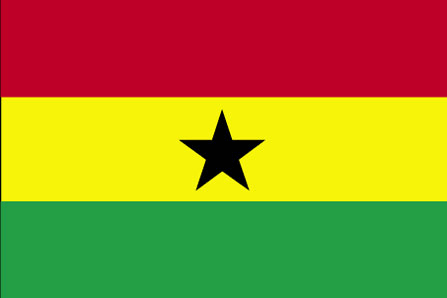To help inspire or plan your trip to Ghana, some of its major attractions
for travellers are shown below, including some of the best natural, historical, cultural and adventure sites in the country.
These include all of UNESCO World Heritage Sites for Ghana which represent the best
of the world's cultural and natural heritage.
Click on the icons below to focus on specific types of features
(click again to return to all).
|
|
|
|
|
|
|
|
|
|
|
|
 |
|---|---|---|---|---|---|---|---|---|---|---|---|
| Natural | History | Wildlife | Trekking | Cities | Religious Monument | Boat Journey | Rail Journey | Diving | Cultural | Adrenaline | UNESCO WHS |
| Kumasi | |
|---|---|
Kumasi was the spiritual and historic capital of the Ashanti Kingdom. Today it is Ghana's second largest city with a population of over one million people. The Manhyia Palace was the former home of the Ashanti kings and today houses a museum. The Armed Forces Museum details the conflicts of the 20th century. Kumasi is also home to West Africa's largest open air market - Kejetia where you can haggle for food, spices and other goods, including Ashanti drums, a key component of Ghanaian music. | |
| Asante Traditional Buildings | |
|---|---|
Only a few homes and temples of the Ashanti civilisation remain today, located north-east of Kumasi, which are constructed from earth, wood and straw. UNESCO World Heritage Site: Asante Traditional Buildings | |
| Kakum National Park | |
|---|---|
The rainforest at Kakum National Park can be explored by walking along a 40 metre high canopy walkway which runs through the park allowing a unique perspective of the rainforest. The park covers 360 km² and is home to monkeys, elephants, antelope, warthogs and buffalo. | |
| Ghanaian Coast Castles | |
|---|---|
Over 20 castles were built along the Ghanaian coast by the colonial powers from the 15th century to protect their interests and for use in the slave trade. The castles at Elmina and the Cape Coast are of particular note, the latter being the centre of British administration in Ghana. UNESCO World Heritage Site: Forts and Castles, Volta, Greater Accra, Central and Western Regions | |
| Bolgatanga | |
|---|---|
Bolgatanga is located in the north of Ghana, close to the border with Burkina Faso. The area includes many interesting attractions such as the sacred crocodile ponds at Paga, the painted houses of Sirigu village, and the Tongo Hills and Tenzug Shrine, the ancestral home of the Talensi people. | |
| Mole National Park | |
|---|---|
Mole National Park is the largest national park in Ghana, at almost 5,000 km², and was established in 1958. It is a slice of East Africa in the west, except with far fewer tourists. The savannah of the park is home to over 300 bird species and over 90 mammals, including elephant, lion, buffalo and several species of monkey and antelope. The guided walking safaris available are a particular highlight. | |
| Kintampo Falls | |
|---|---|
Kintampo Falls are 25 metre high waterfalls on the Ovoko River, a tributary of the Black Volta, which are one of the most impressive in the region. | |
| Lake Botsumtwi | |
|---|---|
Lake Botsumtwi is a crater lake surrounded by forests and hills. It is considered sacred by the local people who fish in the lake using traditional boats carved from tree trunks. There are trails around the lake which can be used for hiking and visiting the many small villages in the area. | |

